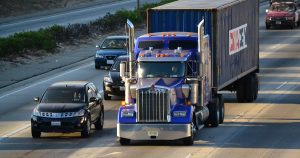Setting the Record Straight on EVs and Biofuels
 Biofuel research in San Diego. Photo: Steve Jurvetson, CC-BY-2.0 (Flickr)
Biofuel research in San Diego. Photo: Steve Jurvetson, CC-BY-2.0 (Flickr) Late last week I submitted a response to an article critical of UCS analysis on electric vehicles that appeared in Biofuels Digest on October 2nd. The editor graciously printed my response in full on Monday, and I am reposting it here.
Cutting oil use and transportation emissions is a big job, that will require both electric vehicles and biofuelsLast week, Biofuels Digest ran a piece claiming that biofuels beat electric vehicles on cost and emissions. The piece specifically took issue with a report my colleagues wrote, Cleaner Cars from Cradle to Grave, which found that battery electric vehicles (EVs) are less polluting than gasoline powered cars, even when the additional emissions associated with producing the cars, particularly the batteries, are considered.
I’m not interested in stoking an argument between supporters of electric vehicles and biofuels. Cutting oil use and global warming pollution from transportation is a big job, and we need rapid progress on both electric vehicles and biofuels, as I described at length in a recent report on Fueling a Clean Transportation Future. But my colleagues and I at the Union of Concerned Scientists believe that solving big problems depends on careful analysis, so I feel compelled to set the record straight on a few key points.
The Biofuels Digest piece has significant errors in its calculations on emissions:- Biofuels Digest suggests it makes sense to consider only the first owner’s emissions in calculating emissions benefits. We disagree. Cars pollute over their whole lives, regardless of how many times they change hands, so it makes sense to calculate emissions benefits over the car’s lifetime. Choosing an arbitrarily low lifetime (less than 7 years) biases the calculation in favor of conventional vehicles.
- Our calculations for EV emissions were based on the average grid where the cars are being charged. The Biofuels Digest comparison is a very optimistic scenario of a car running on advanced biofuel with a 50% GHG reduction. Very few cars run on 100% biofuel, the closest they come is Flex-Fuel vehicles (FFVs) that run on E85 (which is a mix of 51-85% ethanol and gasoline). Very few FFVs run on E85 most of the time, and the ethanol in E85 is mostly corn ethanol, not an advanced biofuel that meets a 50% GHG reduction as Biofuels Digest assumes. So, despite claiming that the 50% GHG reduction is conservative, the 50% GHG savings is very much an optimistic case. To fairly compare optimistic scenarios, we should consider that many EV drivers have also installed solar panels, and an EV charged on solar power virtually eliminates operating emissions.
The emissions associated with driving an EV are coming steadily down, and depend upon where you get your power. Here is our latest update.
The Biofuels Digest piece also has errors in calculations of the relative cost of driving and owning an EV versus an FFV running on E85:- The savings of driving a Chevy Cruze using E85 at current prices does not take into consideration the reduced MPGe while driving on E85. The E85 prices cited are about 23% lower than E10, which is about the same as the reduction of MPGe compared to E10. This means it costs about the same to drive a mile on E85 as E10, not 10% less as Biofuels Digest claims.
- The manufacturer’s suggested retail price (MSRP) for the Nissan Leaf bears little relationship to the actual purchase price, once State and Federal tax credits and other incentives are applied.
The cost of fueling an EV is much lower than a gasoline powered car or a FFV, and the price has been remarkably stable compared to volatile oil and ethanol prices. My colleague David Reichmuth will have much more to say on this topic in the next month. We are aware that the MSRP of EVs is higher than gasoline cars or FFVs, which is why tax credits and rebates for EVs are so important. Lest biofuels advocates claim it’s unfair to include these tax credits in the comparison, recall that the scale-up of ethanol and biodiesel was supported with substantial tax credits, and substantial policy support for biofuels remains in the form of the Renewable Fuel Standard (at least for now).
Moving forward togetherBut while I stand by our analysis of the benefits of EVs, I have no interest in belittling advanced biofuels. In fact, I spend most of my time defending advanced biofuels, including defending the Renewable Fuels Standard, which is under attack, as I explained in my recent blog, EPA Administrator Pruitt is undermining cellulosic biofuels, the RFS and transparency in government.
It is counterproductive for biofuels advocates to belittle the benefits and growing importance of electric vehicles. It’s also not a good idea to focus hopes for the future of biofuels on FFVs burning E85.
The large number of FFVs on the road today are mostly the result of a misguided loophole in fuel economy regulations that gave car manufacturers credit for selling FFVs based on the assumption that these cars would use E85 frequently. This strategy did not work. FFVs are rarely fueled with E85, and the loophole ultimately did much more to increase gasoline use by making cars less efficient than it did to expand ethanol use.
Instead of FFVs, biofuel advocates should focus on a future that includes using ethanol to maximize efficiency as part of a high octane gasoline blend and in sectors like aviation where electrification is more challenging. The bioeconomy also has a key role to play in biomaterials, and as part of carbon removal strategies, as I described in a recent article on the bioeconomy in a world without carbon pollution.
Biofuels and the broader bioeconomy have enormous opportunities in a low carbon future, but with GM, European countries, China and California looking beyond internal combustion engines for light duty transport, doubling down on FFVs and E85 is a road to nowhere.
Cutting oil use and transportation emissions is a big job and a major opportunity for both renewable fuels, renewable electricity and electric vehicles. The hostility of EPA Administrator Pruitt and his friends in the oil industry make this job harder and more important than ever before. Advocates of renewable fuels and electric vehicles need to work together to keep us on track to a clean transportation future.




 Electric vehicle charging stations line the perimeter of San Francisco's City Hall. Photo: Bigstock.
Electric vehicle charging stations line the perimeter of San Francisco's City Hall. Photo: Bigstock. Figure 1: From a presentation by staff to the Air Resources Board in March 2017 showing that by 2050 the majority of cars on the road – and all of new car sales – are powered by electric motors.
Figure 1: From a presentation by staff to the Air Resources Board in March 2017 showing that by 2050 the majority of cars on the road – and all of new car sales – are powered by electric motors. Figure 2: As recently noted in
Figure 2: As recently noted in  Photo: Luis Castilla
Photo: Luis Castilla












 A Waymo self-driving car on the road in Mountain View, CA, making a left turn. CC-BY-2.0 (Wikicommons).
A Waymo self-driving car on the road in Mountain View, CA, making a left turn. CC-BY-2.0 (Wikicommons).


 Texas Army National Guardsmen assess damage to a gas station in Victoria, Texas, Aug. 26, 2017, caused by Hurricane Harvey. Army National Guard photo by Capt. Martha Nigrelle.
Texas Army National Guardsmen assess damage to a gas station in Victoria, Texas, Aug. 26, 2017, caused by Hurricane Harvey. Army National Guard photo by Capt. Martha Nigrelle. 



 Photo: Atomic Hot Links/CC BY-NC-ND 2.0 (Flickr)
Photo: Atomic Hot Links/CC BY-NC-ND 2.0 (Flickr)











